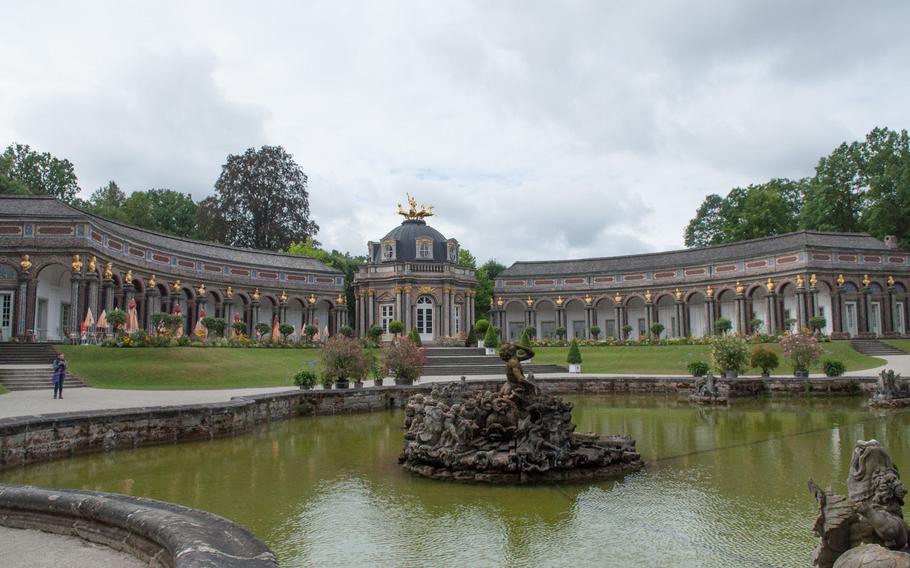
The New Palace at the Gardens of the Hermitage in Bayreuth, Germany, was built in the 18th century and remains the most visually appealing site of the gardens. (Michael S. Darnell/Stars and Stripes)
Bayreuth, Germany, is often overlooked by American soldiers stationed in the Grafenwoehr/Vilseck area.
After all, it lacks the urban flair of nearby Munich and Nuremberg. At first glance, this quaint place can seem like just a smaller version of historic Regensburg.
But travelers who are tired of bouncing between what has become the holy trinity of destinations should check out sleepy little Bayreuth. Among the cities in Bavaria, it easily ranks among the most charming, and it’s home to several attractions that should be on every traveler’s bucket list.
Some of those are well-known, such as the historical Margravial Opera House. Near that popular architectural marvel there is a place that is a little less known but amazing all the same.
The Hermitage Court Gardens is a collection of several historic sites. There is an 18th-century castle, appropriately named the Old Palace. The gardens are also home to that castle’s direct descendent, dubbed the New Palace. Never mind that even the “new” palace pre-dates the United States by several decades.
Surrounding both of these is an enormous walking garden that houses a hedge maze, a reflecting pool and a half-dozen grottos, pavilions, ruins and statues. Each bend around the garden’s well-kept pathways presents something new to look at, whether it’s a towering statue of Socrates or a tranquil stone grotto complete with an intricately carved fountain.
The Old Palace is under tight lock and key, with guided tours that fire off every 45 minutes serving as the only public access. The tours are given only in German, but the guides have English-language booklets that cover major points along the way.
These tours are also the only part of visiting the gardens that costs money; I would highly recommend ponying up the cash.
The New Palace is only relatively so, having been built between 1749 and 1753. It’s also the most visually interesting aspect of the Hermitage. Inside, you can visit a cafe. Outside, a garden pathway opens into a spacious, flower-ringed courtyard with carved fountain display. Every hour the waterworks open up, turning the tranquil courtyard into an impressive example of 18th-century opulence.
There is easily enough to see and do at the gardens to spend a lazy afternoon exploring its grounds, though the highlights can be viewed in about an hour. The outer ring seems popular among joggers, and walkers can enjoy a quick workout on a hiking path next to the gardens before soaking up some history.
It’s simply a great relaxation destination, perfect for couples looking for a day trip, history buffs hoping to break away from the main attractions or anybody just looking for a little peace and quiet. I found it to be the quintessential hidden jewel and an absolute must-visit for anybody in the area. If you’re looking to see something a little different, I highly recommend the Hermitage Court Gardens.